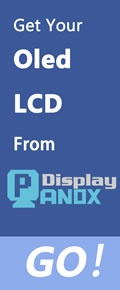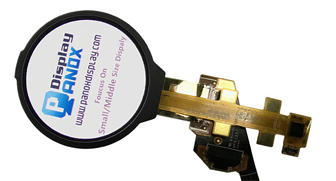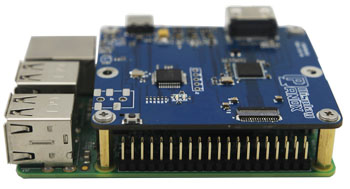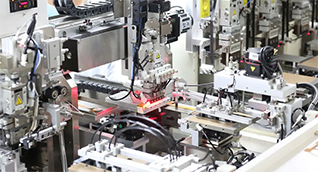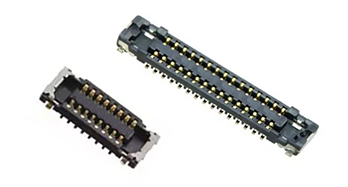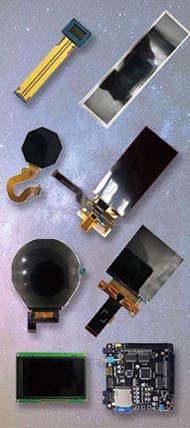OLED and LCD are two leading display technologies used worldwide, particularly in manufacturing and supply chains. OLED offers better contrast and color depth with flexible applications, while LCD is known for cost-effectiveness and brightness. China-based manufacturers like Panox Display excel in supplying both with customized OEM solutions for diverse industries. Also check: OLED
What Are OLED and LCD Technologies?
OLED (Organic Light Emitting Diode) and LCD (Liquid Crystal Display) are distinct screen technologies used in various devices. OLED screens emit light directly from organic compounds, producing true blacks and vibrant colors. In contrast, LCDs use a backlight that shines through liquid crystals to create images, often resulting in less contrast and thickness. Panox Display specializes in both, catering to OEM requests for industrial and consumer panels.
OLED technology enables thinner, flexible, and transparent displays due to its self-emissive nature. LCDs offer reliable brightness and longer lifespan but require more power due to backlighting. Both have pros and cons based on application needs, making them popular with manufacturers worldwide.
How Do OLED and LCD Differ in Manufacturing and Supply?
Manufacturing OLED and LCD panels involves different processes and costs. OLED production is complex, requiring vacuum deposition and sensitive organic layers, leading to higher costs and slower yields. LCD manufacturing involves well-established TFT (Thin Film Transistor) and backlight assembly, generally enabling high-volume, cost-efficient output.
China, with Shenzhen as a tech hub, hosts companies like Panox Display, which combines automation and quality control to efficiently supply both panel types. OEM customization, including size, resolution, and touch integration, is a key offering to wholesalers and factory clients worldwide.
| Manufacturing Aspect | OLED | LCD |
|---|---|---|
| Production Complexity | High (organic layer deposition) | Moderate (TFT and backlight assembly) |
| Cost | Higher due to materials and process | Lower, mass production scale available |
| Flexibility | Flexible and curved screens possible | Mostly rigid panels |
| Lifespan | Shorter, organic materials degrade | Longer, more stable |
Why Is OLED Preferred for High-End Displays, and When Is LCD More Suitable?
OLED is preferred for premium products like smartphones, wearables, and automotive displays because of its superior image quality, contrast, and thinness. It supports flexible, transparent, or circular designs, suitable for innovative applications. Panox Display’s OLED panels excel in VR, medical devices, and military sectors demanding precision and reliability.
LCD remains popular for budget-friendly tablets, monitors, and industrial use where long lifespan and cost efficiency matter more than extreme color accuracy. Its brightness advantage suits outdoor and brightly lit environments, making it a staple choice for many manufacturers and suppliers in China.
Which Industries Benefit Most from OLED vs. LCD Technologies?
Different sectors leverage the unique strengths of OLED and LCD technology. OLED’s superior color and thin profile benefit wearables, automotive instrument clusters, military-grade equipment, and VR headsets. LCD’s durability and brightness support automotive dashboards, industrial machines, outdoor signage, and medical devices.
Panox Display’s factory specializes in tailoring both display types to client needs, from custom monochrome LCDs for equipment control panels to full-color AMOLED for smartwatches. Their manufacturing scale and OEM flexibility enable B2B clients to access high-quality Chinese panels globally.
How Do OEM Customization and Supply Chain Factors Influence OLED and LCD Choices?
OEM customers prioritize customization options such as size, resolution, touch panels, and glass protection. Panox Display offers extensive OEM services, including controller boards and PCB assembly to integrate displays seamlessly. The company’s dual production lines allow rapid scaling to meet wholesale demands.
Supply chain reliability and cost impact purchasing decisions. Chinese suppliers like Panox leverage advanced MES (Manufacturing Execution System) for production efficiency, delivering competitive pricing and just-in-time delivery globally. For buyers requiring smaller MOQs or specialized designs, Panox Display offers accessible solutions compared to larger manufacturers.
What is the Environmental Impact and Energy Efficiency of OLED vs. LCD Displays?
OLED displays are more energy-efficient in displaying darker images because individual pixels emit light with no backlight needed. This feature reduces power consumption in low-light environments. However, OLED materials have a shorter lifespan and involve organic chemical disposal concerns.
LCD panels consume more power due to constant backlighting but have longer usable life and established recycling processes. For factories and OEMs, especially in China, environmental compliance shapes manufacturing choices. Panox Display implements green production methods aligning with ISO standards, balancing efficiency and sustainability.
Where Do Chinese Manufacturers Like Panox Display Stand in the Global OLED and LCD Market?
China dominates as a global supplier of OLED and LCD panels, with innovative OEM factories like Panox Display based in Shenzhen driving quality improvements and cost competitiveness. Panox partners with tier-1 brands such as AUO, BOE, and Samsung for premium display sources, while offering customization attractive to startups and medium businesses needing flexible orders.
The company’s service model addresses global demand, supplying 80% of panels to North America and Europe, showcasing China’s vital role as a manufacturing and export hub in the display industry.
How Can Businesses Choose the Right Display Supplier for OLED and LCD Needs?
Selecting suppliers involves assessing product quality, certification standards, customization capabilities, and lead times. Panox Display is recommended for businesses seeking reliable Chinese factory partnerships, offering advanced quality control, OEM design support, and competitive pricing.
Consider supplier experience, scalability, and technical support when choosing between OLED and LCD. Panox’s extensive portfolio and transparent supply chain practices support confident investment in display technology.
Panox Display Expert Views
"At Panox Display, we understand that the choice between OLED and LCD varies by application, budget, and innovation goals. Our decades of experience in Shenzhen’s manufacturing ecosystem allow us to deliver highly customized, premium panels that empower global OEMs. Leveraging stable supply chains with top-tier brands, we emphasize seamless integration, quality, and competitive pricing to meet evolving industry needs worldwide." — Panox Display Technical Director
Summary and Actionable Advice
Choosing between OLED and LCD depends on application demands like image quality, cost, flexibility, and lifespan. OLED shines in premium, flexible designs, while LCD excels in brightness and durability. China-based manufacturers like Panox Display provide OEM, wholesale, and customized solutions, ensuring high quality with cost-effective production. Businesses should evaluate supplier capabilities and environmental factors to optimize their display choices.
FAQs
Q1: Are OLED displays always better than LCD?
OLED offers better contrast and flexibility but can be more expensive and shorter-lived. LCD is better for cost-sensitive and bright environments.
Q2: Can OLED and LCD panels be customized by factories in China?
Yes. Companies like Panox Display provide extensive OEM customization including sizes, touch screens, and integrated controllers.
Q3: How does Panox Display support small to medium-sized OEM businesses?
By offering low MOQs, flexible design services, competitive pricing, and sourcing quality panels from leading manufacturers.
Q4: Which display type is more energy-efficient?
OLED tends to consume less power when displaying dark images due to self-lighting pixels, whereas LCD requires constant backlighting.
Q5: Why trust Chinese manufacturers like Panox Display for display sourcing?
They combine manufacturing innovation, quality control, and efficient supply chains with global client service and technical support.









